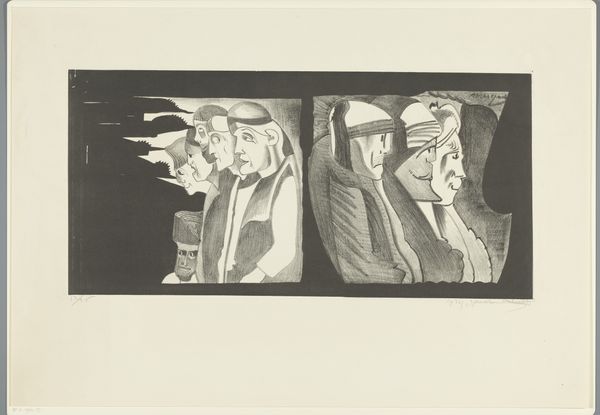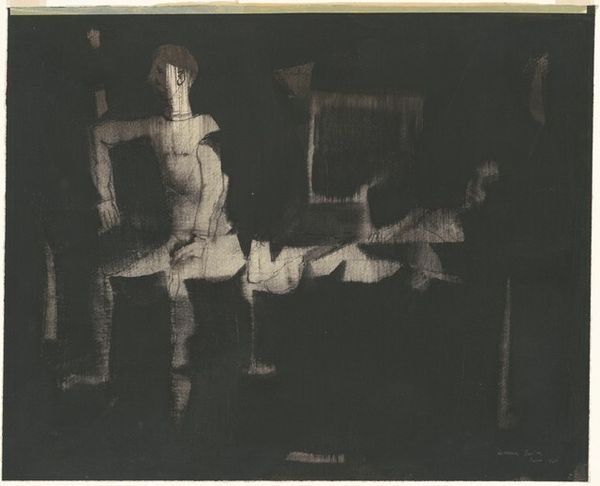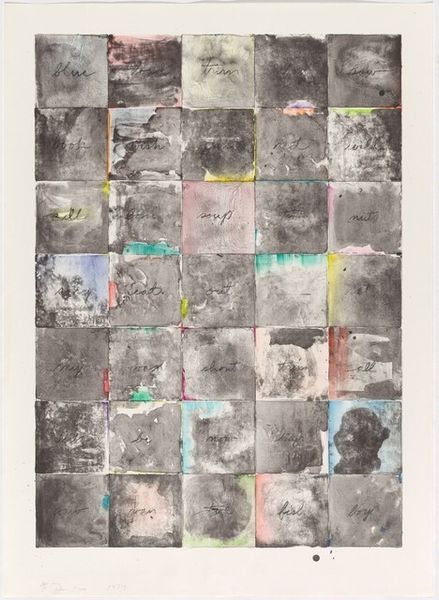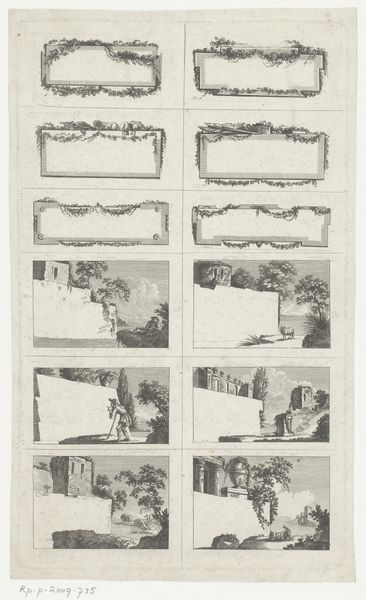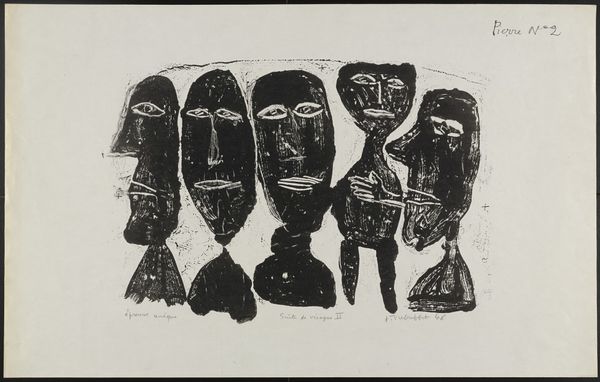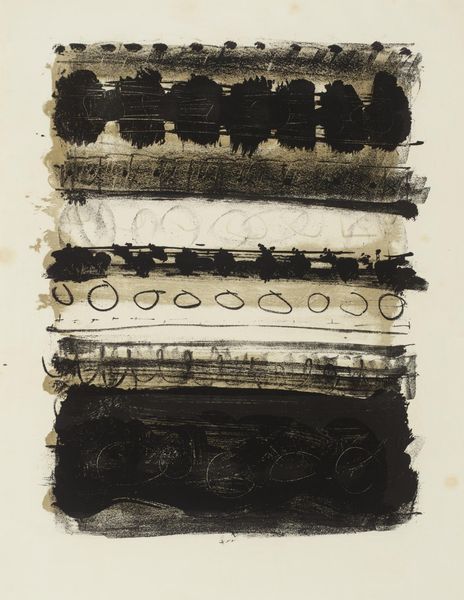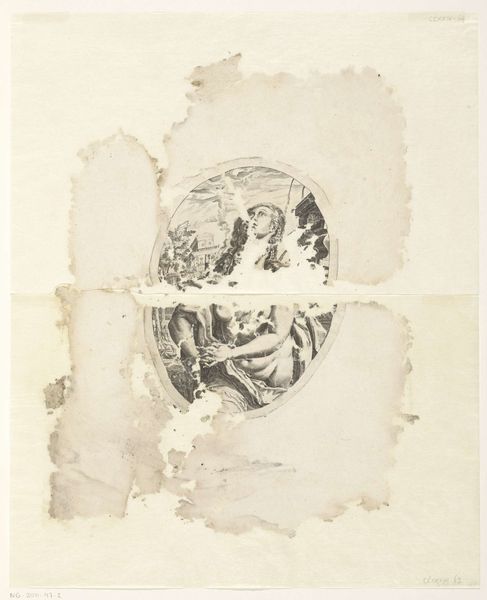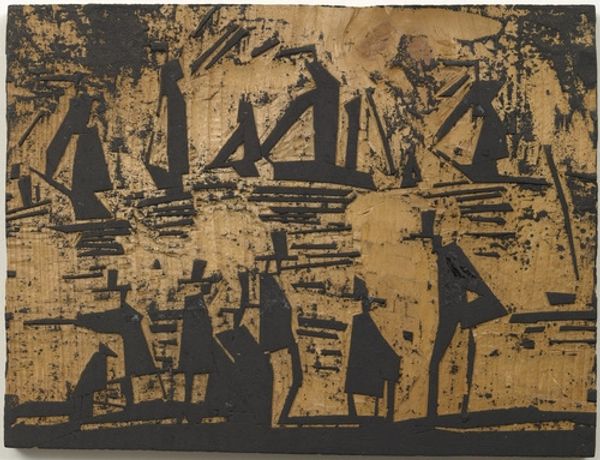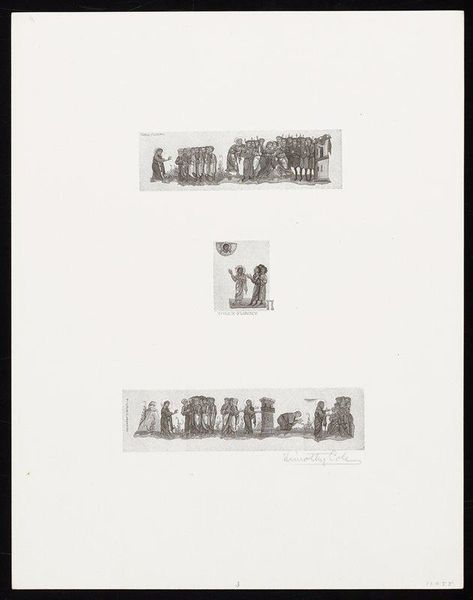
graphic-art, print
#
portrait
#
graphic-art
# print
#
figuration
Copyright: National Gallery of Art: CC0 1.0
Curator: Here we have Rudy Pozzatti's 1961 graphic print, "Hierogram." Editor: My first thought is of layers. They stack up like sediment, histories piling on one another in these textural rectangles. Curator: The word "hierogram" literally means "sacred writing." Considering Pozzatti’s history and visual lexicon, there could be symbolic coding within. What could these rows possibly represent? Editor: Given the etching process, the work relies so heavily on labor. It’s about the material and how Pozzatti, through focused time and technique, could coax meaning out of the copper plate, acid, and paper. I see his labor echoed in each repetition of human faces that crowd the graphic work. Curator: Yes, the human face certainly looms large here. Each row depicts a series of heads, some appearing to be figures of authority or perhaps religious icons—their repeated presences feel almost oppressive and ritualistic. I detect how those repeated figures gain strength as a group identity. Editor: Interesting point, but consider what seems to be implied, Pozzatti might not wish to only highlight the "strength" of such authority figures and power. See that bottom row of nearly-skulls... could those not represent death or other historical misdeeds that Pozzatti is hinting to as a critique against historical systems? Curator: You are probably right, as I examine the print longer the artist suggests multiple faces that each serve complex intentions for those that have held those seats. The symbolism in this is multi-faceted and a complex series of considerations by Pozzatti that reflect authority over human nature. Editor: Considering my lens on labor and medium, each etched line a conscious mark of effort. I wonder about the socio-political backdrop that birthed "Hierogram". Are these a commentary on power, oppression, or resilience? It is an intriguing consideration. Curator: Pozzatti's “Hierogram” remains an important contribution as it offers a complex historical assessment, I must say. Editor: Ultimately it leaves us pondering not only the “who,” but equally the "how." Materiality and methods provide insights no less valuable.
Comments
No comments
Be the first to comment and join the conversation on the ultimate creative platform.
